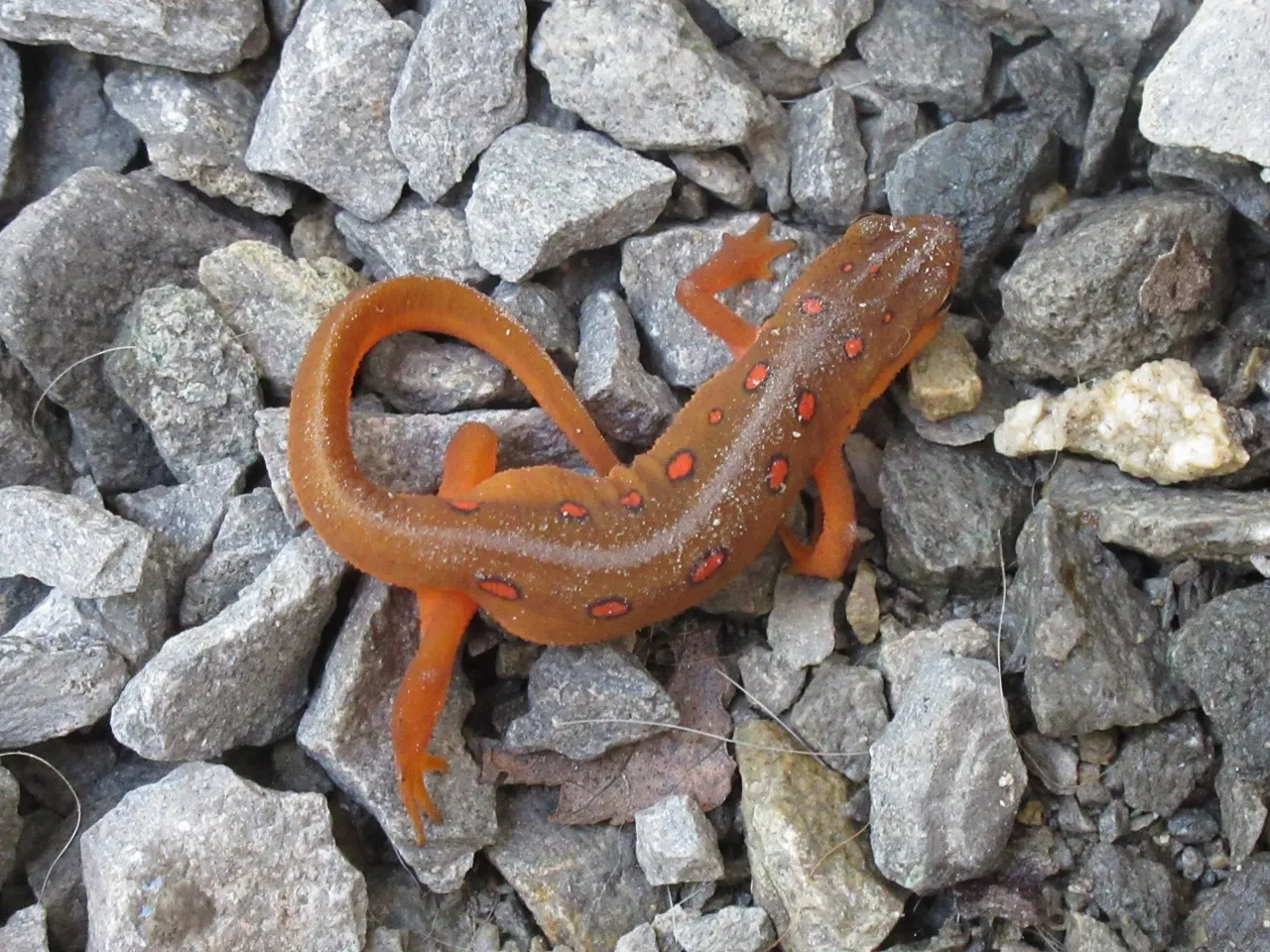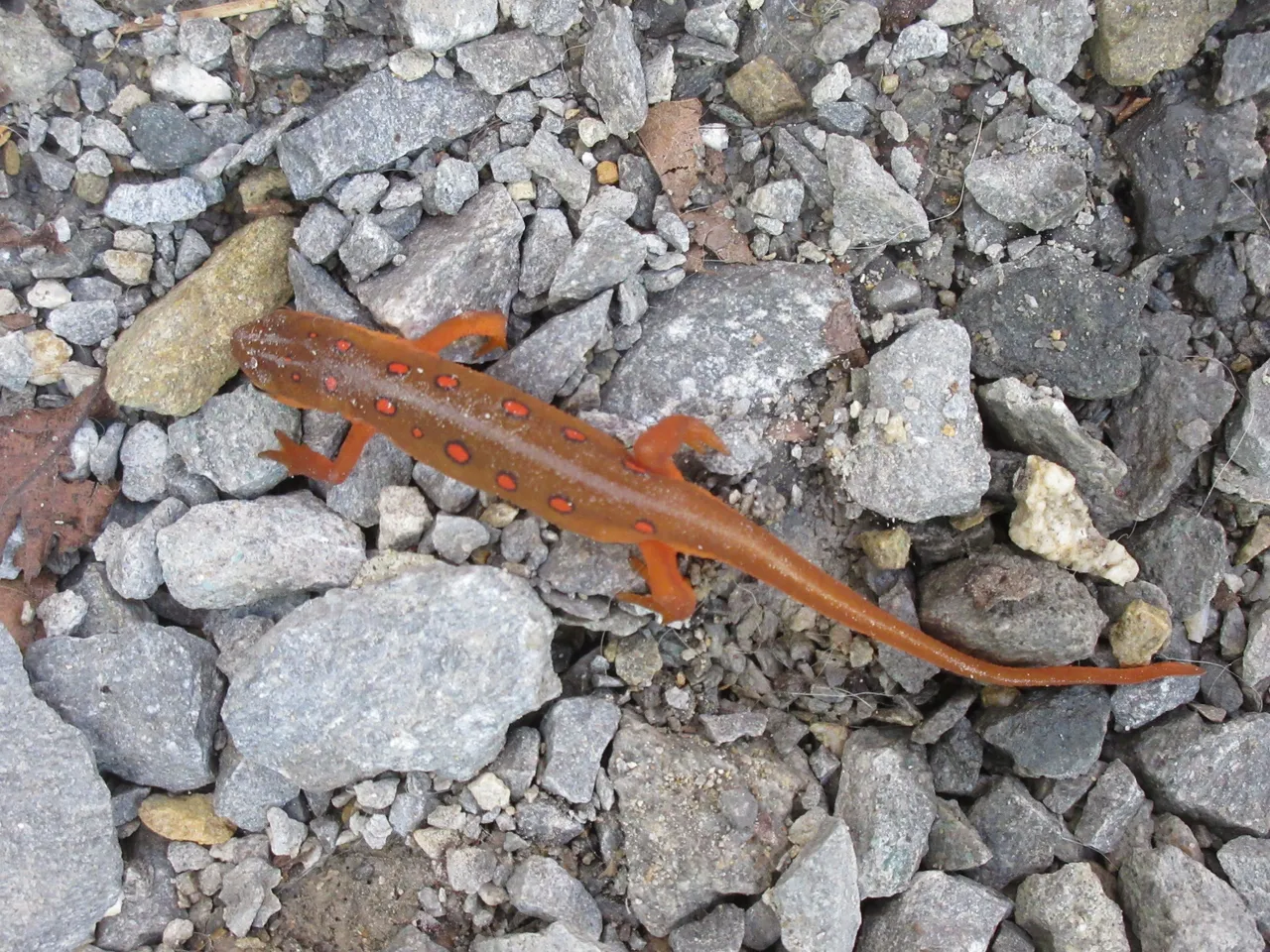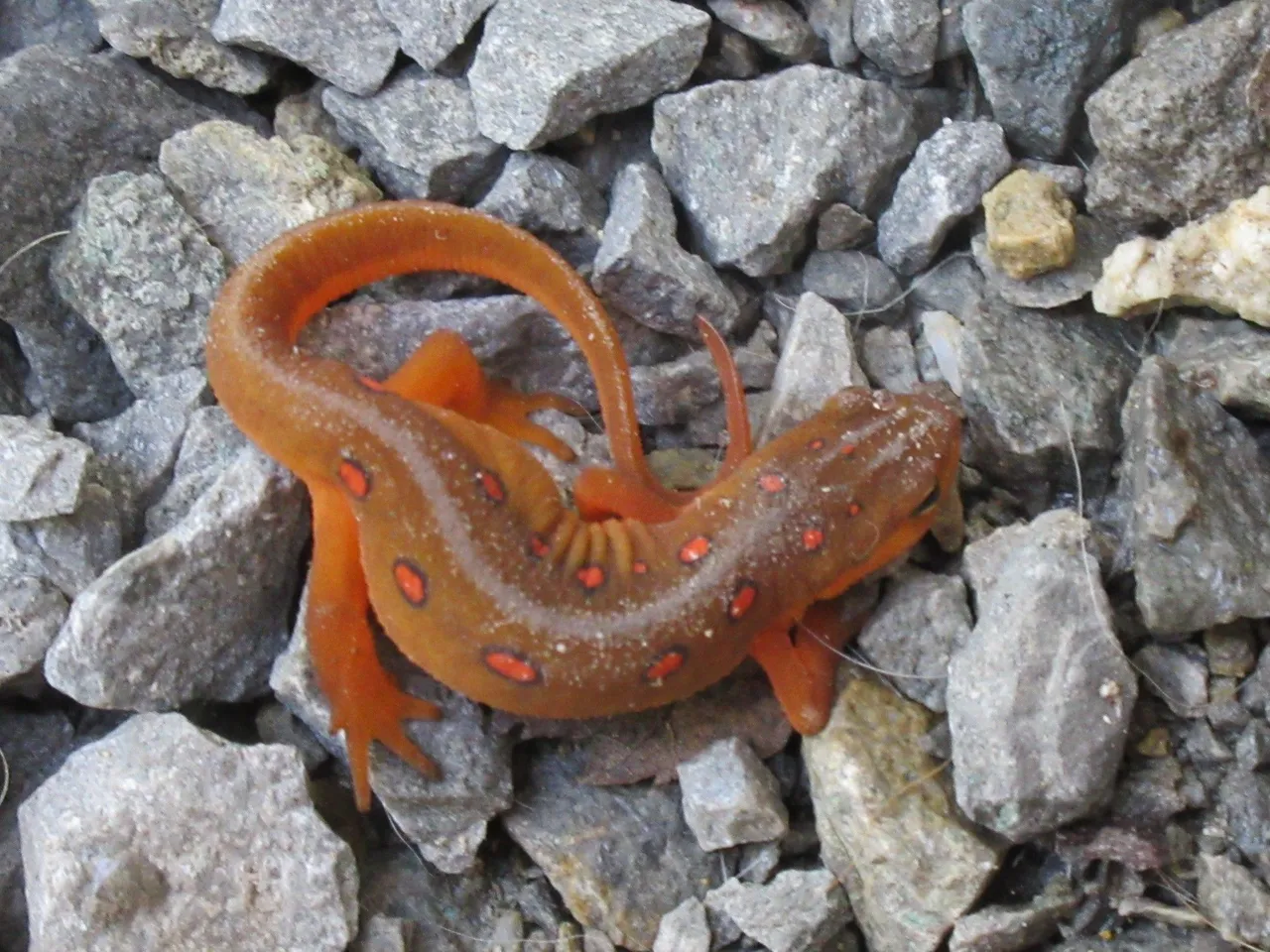After countless hours of detective work and a few cocktails, I present to you the Eastern Newt (Notophthalmus viridescens). All right, I might have exaggerated a little bit about the actual time spent trying to find info on this critter. I did find out some cool stuff though.

Per the Kentucky Fish & Wildlife, there are 30 different salamanders in KY, but only one newt. Source
Newts are a type of salamander that belongs to the subfamily called Pleurodelinae and that's in the family Salamandridae. Man, aren't you glad you don't have to figure all this out.
Now what is the difference between a newt and a salamander, because I sure want to know? Well, it gets confusing because the terms are often used interchangeably. So to simplify as best I can. You can tell them apart as adults because adult newts have webbed feet and a paddle-like tail, allowing them to move with ease in the water. Salamanders, on the other hand, have longer and rounder tails with defined toes for digging in the dirt. So what did we learn boys and girls? That this juvenile newt looks just like a salamander, lol. No wonder I'm confused. To make matters worse, all newts are salamanders, but not all salamanders can be newts. Oh, I'm just gonna leave that alone.

As an amphibian, newts start their three stage life cycle in the water as a larva (tadpole) and graduate into a terrestrial or land based juvenile. At this stage they are known as "red eft". As they mature they return to the water to live out their aquatic life as adults.
Ok, now that we have that sorted out, on to this "newt" whom I have named Jimmy. Jimmy is the kind of juvenile newt that likes to party hardy, eating loads of frog eggs and baby snails. He (cuz I named it Jimmy) hangs out in the gravel under one of my water catchment totes, in front of the house and seems to be fairly cordial. Not overly friendly, but when the need arises, we cross each others paths. He's been here all Summer.
Jimmy possesses a super cool feature called, magnetoreception. That's a fancy word that means little Jimmy has a built in compass allowing him to use magnetic orientation to find his way home. If you want to get all sciency about it. He has ferromagnetic material in his body, most likely biogenic magnetite. Source Wavelengths of light also come into play in his travel destinations. Source It's all pretty fascinating stuff.

Another thing that I found interesting, is that these newts average life span is 15 years. I mean that's longer than most of my pets. Jeez, at this rate I might have to include Jimmy in my will, haha.
You can learn more about this critter at: http://animaldiversity.org/site/accounts/information/Notophthalmus_viridescens.html#references
Onward in Strength!
Mary Lotus